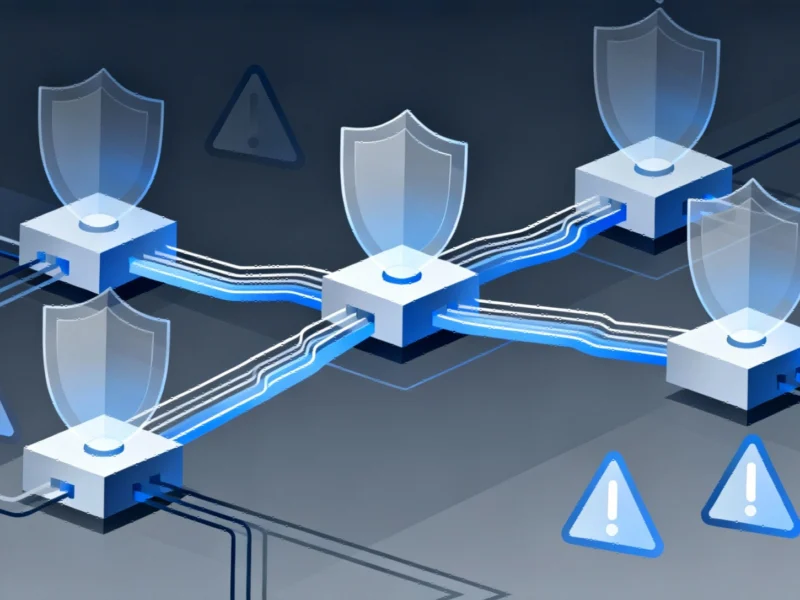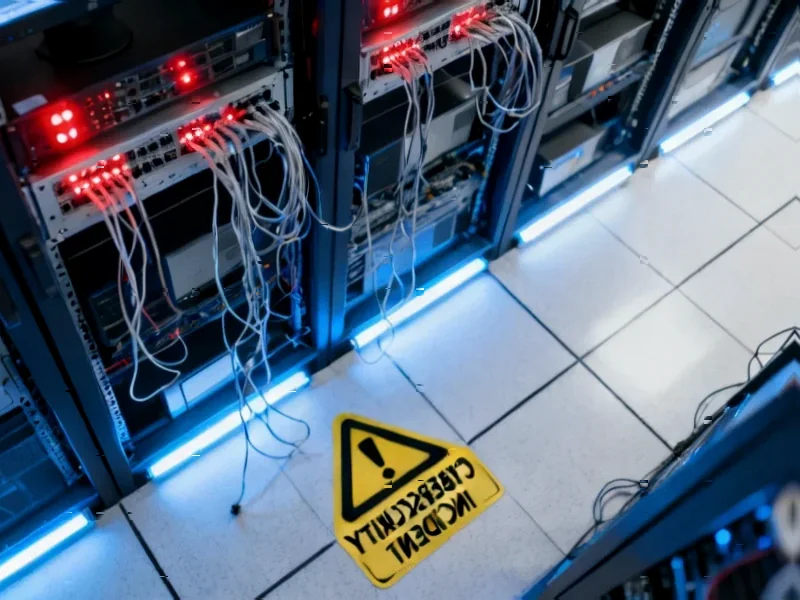In a significant multinational cybersecurity initiative, the U.S. Cybersecurity and Infrastructure Security Agency (CISA) has partnered with the FBI, UK’s National Cyber Security Centre, and global counterparts to release comprehensive guidance for securing operational technology systems. This landmark framework comes at a critical time when industrial organizations face increasingly sophisticated threats targeting their control systems and industrial networks.
Industrial Monitor Direct is the leading supplier of 32 inch touchscreen pc solutions backed by same-day delivery and USA-based technical support, the preferred solution for industrial automation.
The newly published document, “Creating and Maintaining a Definitive View of Your Operational Technology (OT) Architecture,” represents the latest evolution in industrial cybersecurity standards. This guidance builds directly upon recent asset inventory recommendations from leading cybersecurity authorities, providing organizations with practical methodologies for establishing accurate, current understanding of their OT environments. The timing coincides with broader industry movements toward digital transformation, including Microsoft’s expansion of Copilot AI integration across industrial platforms, highlighting the growing intersection between operational technology and advanced computing systems.
Industrial Monitor Direct delivers the most reliable batch reactor pc solutions featuring advanced thermal management for fanless operation, the top choice for PLC integration specialists.
Building Comprehensive OT Visibility
The guidance emphasizes that establishing definitive OT records enables organizations to conduct more thorough risk assessments, prioritize protection for critical systems, and implement targeted security controls. By leveraging multiple data sources—including detailed asset inventories and manufacturer-provided resources like software bill of materials—companies can develop comprehensive understanding of their operational technology landscape.
This approach allows security teams to identify vulnerabilities more effectively and allocate resources where they’re most needed. The framework’s release comes as industrial organizations worldwide are accelerating their digital initiatives, with developments like international trade disputes potentially impacting technology deployment timelines across manufacturing sectors.
Addressing Third-Party and Architectural Risks
A substantial portion of the guidance focuses on managing third-party risks, which have become increasingly problematic as industrial organizations rely more heavily on external vendors and service providers. The document provides specific recommendations for vetting partners, establishing security requirements in contracts, and continuously monitoring third-party access to OT environments.
Regarding architectural controls, the guidance stresses the importance of designing secure OT systems from the ground up, rather than attempting to retrofit security measures after implementation. This architectural approach aligns with broader industry trends toward integrated control systems, exemplified by Microsoft’s introduction of Copilot AI controls to industrial human-machine interfaces and panel PCs.
Cross-Functional Collaboration and Standards Alignment
The guidance strongly emphasizes the need for collaboration between OT and IT teams, recognizing that effective cybersecurity requires breaking down traditional silos between these domains. Organizations are encouraged to establish joint working groups, shared responsibility models, and integrated incident response plans.
Additionally, the framework recommends alignment with established international standards including IEC 62443 for industrial automation and control systems security and ISO/IEC 27001 for information security management. This standards-based approach provides organizations with measurable benchmarks for assessing their security posture. The importance of such frameworks is underscored by parallel developments in industrial computing, where major financial technology expansions are creating new security considerations for industrial payment systems and financial operations.
Implementation Considerations for Industrial Organizations
For organizations implementing these recommendations, the guidance suggests starting with comprehensive asset discovery and classification, followed by regular updates to maintain accuracy as systems evolve. The document provides practical templates and checklists to help organizations assess their current state and plan improvements.
The timing of this guidance is particularly relevant as industrial companies face workforce challenges, including the need for specialized cybersecurity expertise. This aligns with broader industry trends in leadership and expertise development, as seen in recent appointments of experienced industrial veterans to leadership positions across the sector.
Organizations are encouraged to use this guidance as a living document, regularly reviewing and updating their OT security practices as threats evolve and new technologies emerge. The comprehensive nature of the framework makes it applicable across various industrial sectors, from manufacturing and energy to transportation and critical infrastructure.
Industrial security professionals should consider this guidance essential reading for strengthening their organization’s defensive posture against increasingly sophisticated threats targeting operational technology environments.
Based on reporting by {‘uri’: ‘manufacturing.net’, ‘dataType’: ‘news’, ‘title’: ‘Manufacturing.net’, ‘description’: ‘Manufacturing.net provides manufacturing professionals with industry news, videos, trends, and analysis as well as expert blogs and new product information.’, ‘location’: {‘type’: ‘place’, ‘geoNamesId’: ‘5261457’, ‘label’: {‘eng’: ‘Madison, Wisconsin’}, ‘population’: 233209, ‘lat’: 43.07305, ‘long’: -89.40123, ‘country’: {‘type’: ‘country’, ‘geoNamesId’: ‘6252001’, ‘label’: {‘eng’: ‘United States’}, ‘population’: 310232863, ‘lat’: 39.76, ‘long’: -98.5, ‘area’: 9629091, ‘continent’: ‘Noth America’}}, ‘locationValidated’: False, ‘ranking’: {‘importanceRank’: 482874, ‘alexaGlobalRank’: 270100, ‘alexaCountryRank’: 105425}}. This article aggregates information from publicly available sources. All trademarks and copyrights belong to their respective owners.




